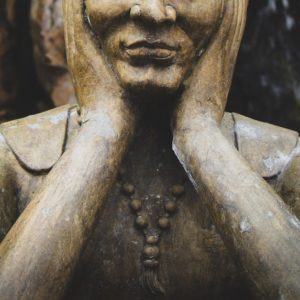Introduction Workplace Splendour Faced simply by Most Hard anodized cookware Americans

As reported in a recent newspaper article, Asian Americans are facing the highest rates of workplace discrimination in the United States. According to a survey, approximately 31 percent of Asian Americans surveyed reported experiencing incidents of workplace prejudice. In contrast, other racial, ethnic, and minority groups, such as African Americans, report fewer incidents to the Equal Employment Opportunity Commission (EEOC), with a rate of 26 percent. This study paints a troubling picture of the challenges faced by Asian Americans, making them susceptible targets for racism.
As enshrined by the civil rights movement, no group should be subjected to mistreatment and disregard.
What Constitutes Workplace Discrimination?
Workplace discrimination is rooted in various biases and occurs when an individual or group treats someone unfavorably based on factors such as gender, sexual orientation, race, religion, pregnancy, maternity, or disability.
What Are Three Examples of Discrimination?
Asian American women encounter biases at more than double the rate compared to men. These biases manifest in incidents of harassment, current workplace conditions, and the assignment of job responsibilities.
The most common forms of workplace discrimination cited by survey participants include:
- Sexual Bias (at 26 percent)
- Racial Prejudice (at 23 percent)
- Age Bias (at 17 percent)
Many of these incidents pertain to decisions regarding promotions and unequal compensation for employees. Other forms of discrimination include favoritism, sexual preferences, and language biases, although not all of these are covered by government laws.
How Does Asian Culture in the Workplace Contribute to Stereotypes?
- Asians who refrain from speaking up may be perceived as disinterested or lacking knowledge of an issue. This stereotype is inaccurate, as excessive talking is often viewed as a sign of weakness in Asian culture. Thus, individuals who are reserved or quiet should not be judged based on their ability to perform the task.
- Asians are sometimes stereotyped as quiet, passive, and anti-social. This stereotype suggests that they are less innovative and unwilling to take risks or confront challenges. Other racial groups may act as if Asians are not present among them.
- Asians are often characterized as friendly yet diligent and highly qualified. However, these traits are not exclusive to Asians and can be found in individuals from other racial backgrounds as well.
Regarding Cultural Traditions
To combat these cultural biases, it is essential to understand Asian culture and way of life. This understanding can help eliminate harsh judgments within organizations, groups, and firms. Efforts should be made to eradicate racism in the workplace.
Regarding Communication
Due to their relationship-oriented perspective deeply ingrained in their culture, Asians may communicate indirectly. Providing feedback to others can be challenging for them. They would rather avoid open disagreements to allow others to save face.
Additionally, the deep respect for authority figures and the hierarchical structure prevalent in many Asian cultures influence their behavior in formal or business meetings.
An Asian individual nodding does not necessarily indicate agreement with the speaker; it may simply mean that they have heard the speaker’s words clearly.
Regarding Work Ethics
Due to their sense of humility, many Asians downplay their qualifications during job interviews. From an early age, they were taught not to boast about their achievements. Aspiring to a higher position is often perceived as arrogance. Asians believe that hard work should speak for itself.
When it comes to self-assessment in the workplace, they may feel uncomfortable evaluating their own performance. Additionally, they prefer to receive rewards as part of a group rather than receiving individual credit.
While Caucasian children learned to advocate for themselves to succeed in life, Asian children were taught that their diligence would be recognized by their superiors if they worked hard.
How to Avoid Becoming a Target of Workplace Discrimination
To reduce the risk of becoming an easy target, Asian Americans should speak out and demand equal treatment in accordance with the law. Business owners, in turn, should make extra efforts to manage a diverse workforce and reap the benefits of a cross-cultural workplace.
For more job search, resume, and work-life balance tips, you can visit the resume help page. You can also browse the list of the latest resume service reviews on this site to determine whom to hire.
Pam Montero  is usually connected with a worldwide manpower recruitment agency located in Singapore.
Picture by rawpixel. com from Pexels
Related Posts:
Diversity Education and Profession Development
Coping with Ethnic Discrimination at work



